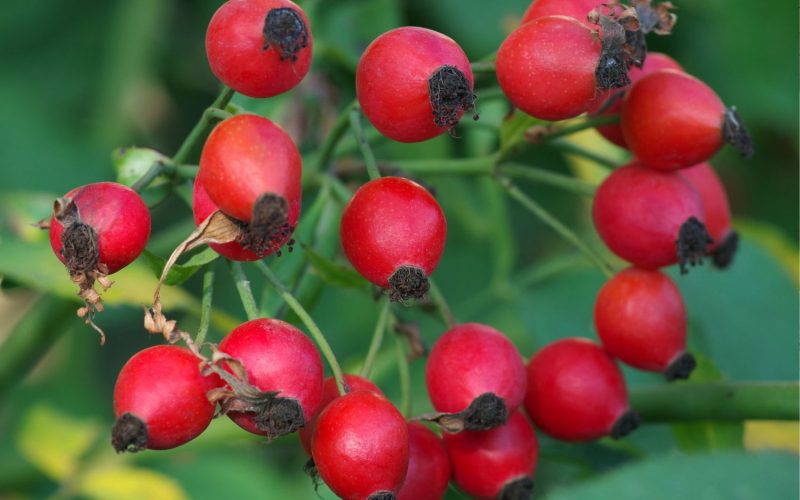The tiny fruits that grow under the rose petals and contain the seeds also make tea rich in vitamin C
Words Jennifer Stackhouse
Roses are usually grown for their beautiful flowers — but if the flowers are not picked or dead headed, these popular ornamentals turn into productive plants that produce fruit high in vitamin C.
Rose seeds form in the rose hip, or hep. This small, round green fruit ripens to orange or red in autumn and persists through winter. It is the flesh surrounding the small seeds and is full of nutrients.
Rose hips look like small apples, which isn’t a coincidence. Apples and roses are closely related and both are in the plant family Rosaceae.
This isn’t a fruit to eat like an apple, though. Instead, rose hips are cooked and strained to make cordials and tonics.
Vitamin C from wild-growing rose hips was particularly important in the UK during World War II when imported sources of vitamin C such as citrus were unobtainable.
Rose-hip syrups were a particularly important dietary supplement for pregnant women, babies and invalids.

Best choices for hips
While most roses form hips, some are more reliable, more attractive and give a better harvest.
Hedging and wild roses such as the dog rose (Rosa canina) and the briar rose (R. rubiginosa) produce lots of red or orange rose hips (see photo above). These roses may be found growing wild by roadsides or near old homesteads and may be considered weeds.
Many rugosa roses produce large and very ornamental hips. Also grown for decorative red hips are R. moyesii ‘Geranium’ and R. filipes ‘Kiftsgate’.
Of the modern hybrid tea roses it is ‘Queen Elizabeth’ that produces the largest rose hips.
Growing tips
Like all roses, those grown for hips grow best with full sun and fed with fertiliser or manure from spring to late summer to encourage strong flowering.
Avoid pruning after flowering or you’ll be cutting off the developing hips.
Rose label
Common names: Rose, wild rose
Botanical name: Rosa ssp.
Family: Rosaceae
Aspect & soil: Sun; well-drained soil
Best climate: All (hips best in cool climates)
Habit: Deciduous shrub or climber
Propagation: Seed, cutting, potted plants
Difficulty: Easy








